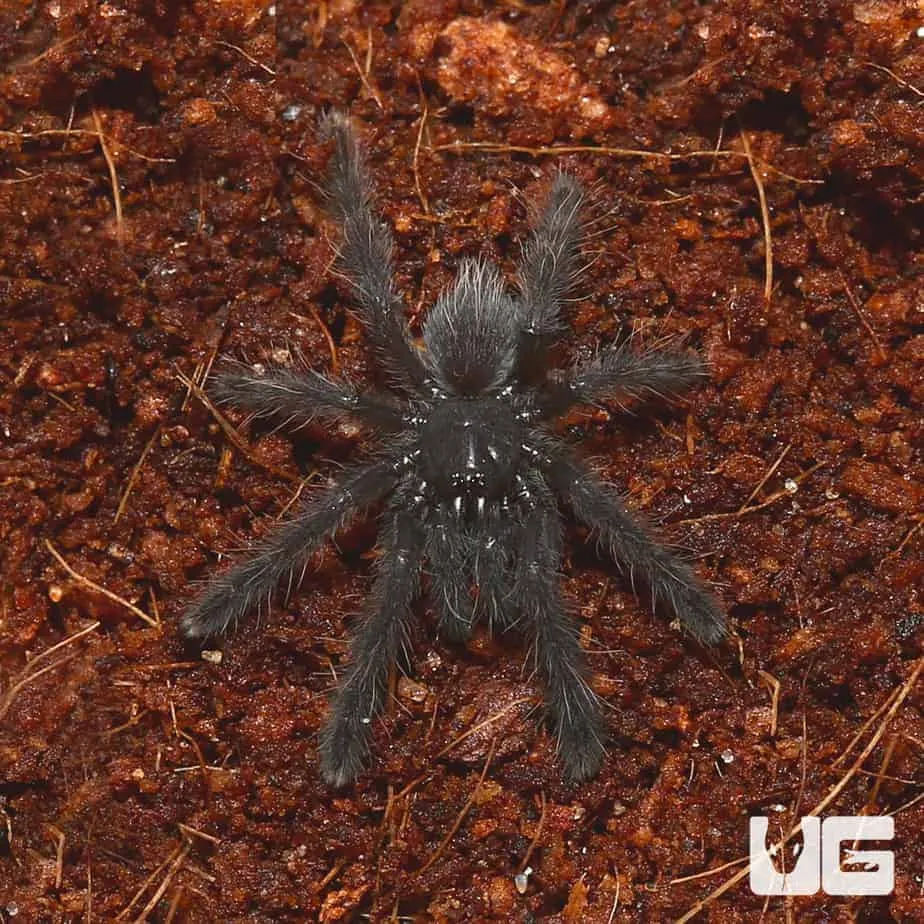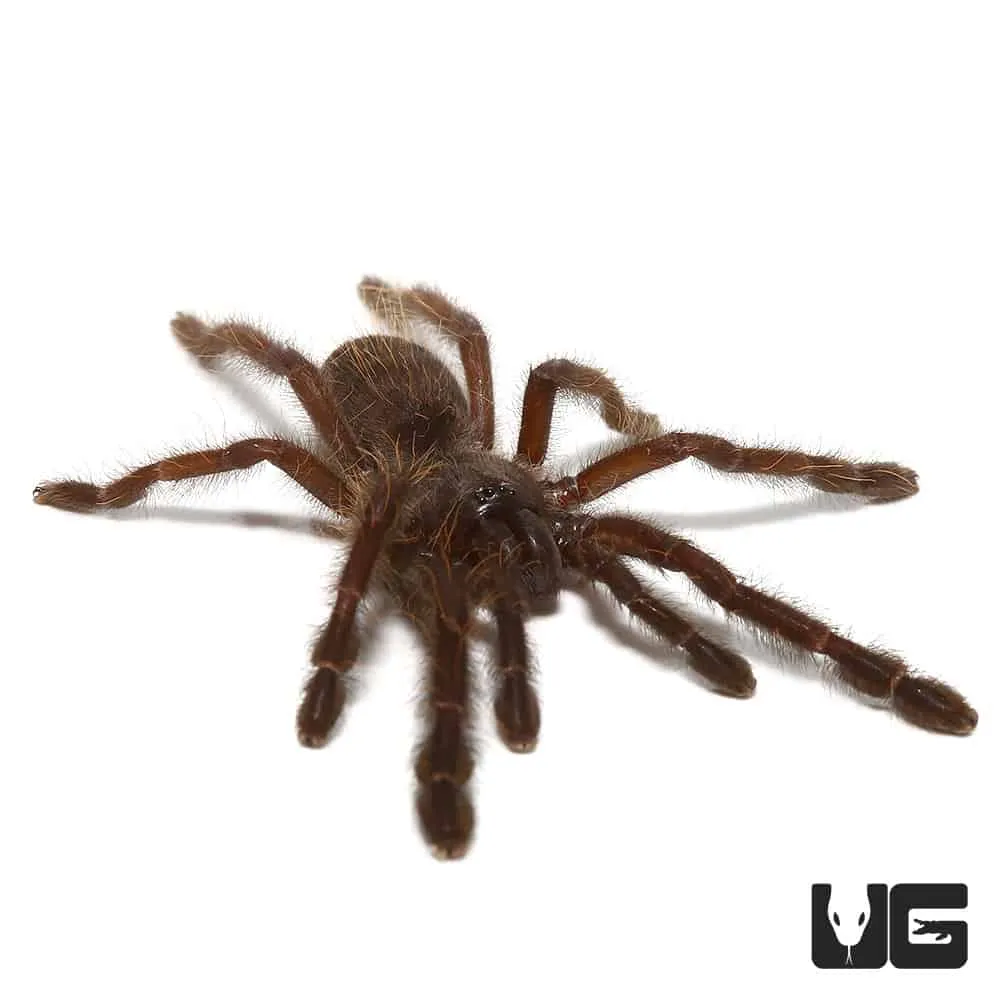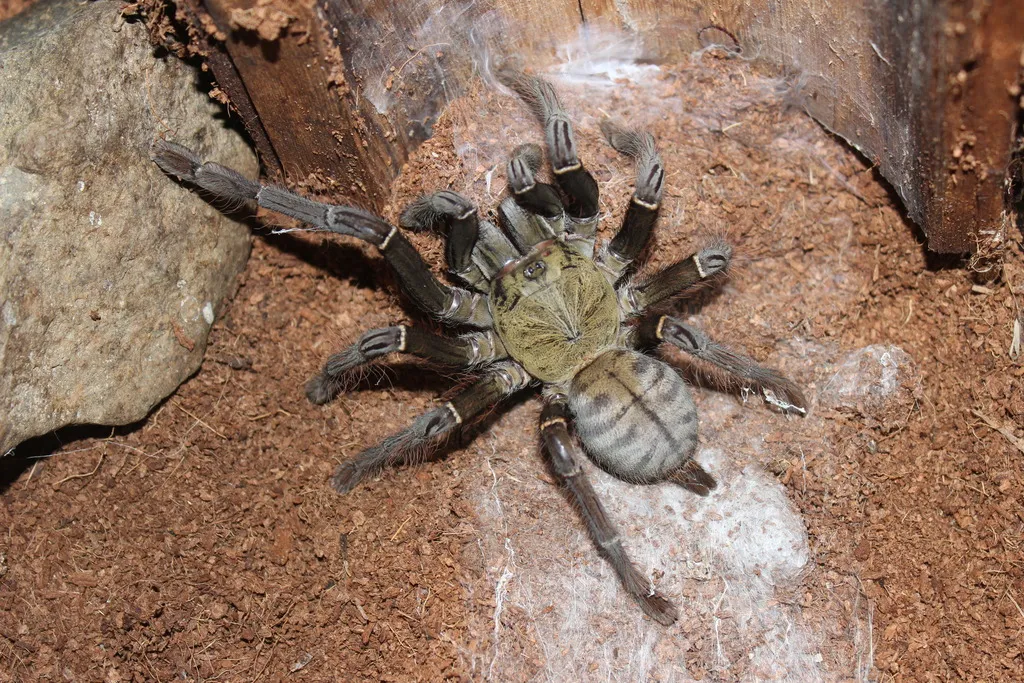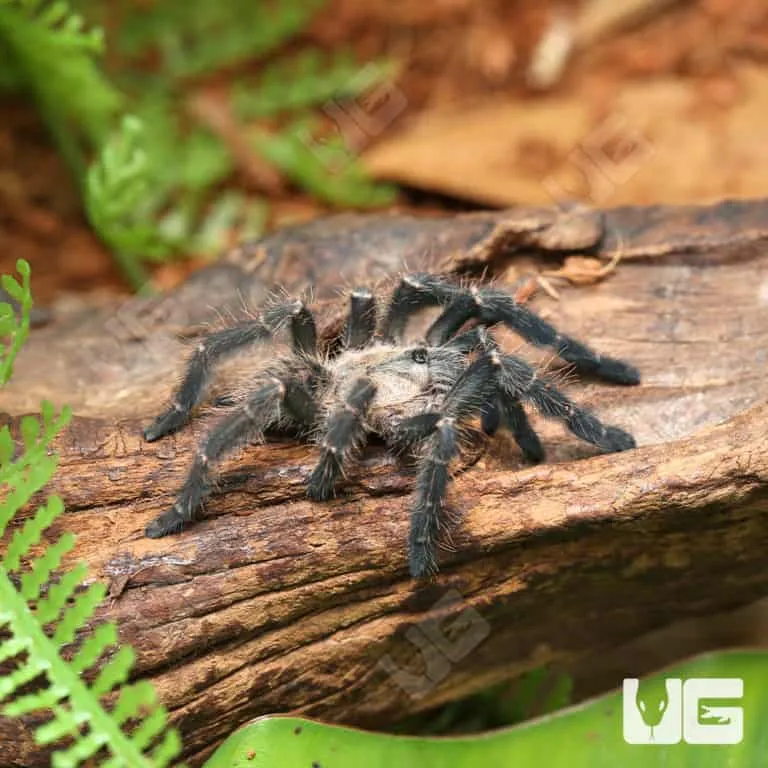What is an Earth Tiger Tarantula (Overview)
The Earth Tiger Tarantula, scientifically known as Haplopelma hainanum, is a captivating species of tarantula that has gained popularity among arachnid enthusiasts. Native to Southeast Asia, these spiders are known for their striking appearance and relatively manageable care requirements. Their scientific name, Haplopelma hainanum, hints at their origin, with “Hainanum” referring to Hainan Island in China, where they were first documented. As a burrowing species, the Earth Tiger Tarantula spends a significant portion of its life underground, creating elaborate tunnel systems within their enclosures. This behavior is a crucial aspect of their natural instincts and must be considered when providing them with suitable living conditions. Understanding their origins and natural behaviors is the first step in appreciating these magnificent creatures and ensuring their well-being in captivity.
Appearance and Characteristics
The Earth Tiger Tarantula boasts a distinctive appearance, characterized by its impressive size and striking coloration. Mature females can reach a leg span of up to 6-8 inches, while males are typically slightly smaller. Their bodies are robust, covered in dense hairs, and their coloration varies from a dark brown to a rich, reddish-brown hue, often adorned with subtle striping patterns on their legs and carapace, hence the “Tiger” in their name. Their fangs are relatively large and powerful, designed to subdue their prey. The pedipalps, or mouthparts, are also noticeable, particularly in males, as they mature and develop specialized structures used in mating. Observing their appearance is not only aesthetically pleasing, but also helps in identifying their health and potential molting cycles, providing valuable insights into their overall well-being.
Size and Lifespan

The Earth Tiger Tarantula’s size and lifespan are essential factors to consider for potential keepers. As mentioned earlier, females are considerably larger than males, often reaching a leg span of 6-8 inches. Males, on the other hand, are generally smaller, with a leg span of approximately 5-6 inches. The lifespan of an Earth Tiger Tarantula can vary depending on sex and environmental conditions. Females have a significantly longer lifespan, often living for 12-15 years or even longer in optimal conditions. Males, however, have a shorter lifespan, typically living for only 3-5 years, as their primary purpose is to reproduce. This difference in lifespan highlights the importance of considering the sex of the tarantula and providing appropriate care based on its specific needs and stage of life, ensuring their longevity and well-being.
Habitat and Natural Environment
Understanding the natural habitat of the Earth Tiger Tarantula is crucial for replicating its ideal living conditions in captivity. These spiders are native to the tropical and subtropical regions of Southeast Asia, including areas of China, Vietnam, and Thailand. They primarily inhabit terrestrial environments, favoring humid, forested areas with dense vegetation and loose, well-draining soil. Their natural habitat is characterized by a warm, humid climate with temperatures typically ranging from 75-85°F (24-29°C) and humidity levels between 70-80%. They are burrowing spiders, spending most of their time underground in elaborate burrows they construct to protect themselves from predators, regulate temperature, and ambush prey. Replicating these conditions in their enclosure is vital for their health and overall well-being in a captive environment.
Where Do They Live?
Earth Tiger Tarantulas predominantly reside in the tropical and subtropical regions of Southeast Asia. They are commonly found in countries like China, Vietnam, and Thailand, where the climate and environment align with their specific needs. They tend to gravitate toward areas with dense vegetation, providing ample cover and protection from predators. They prefer environments with loose soil, which enables them to construct their burrows effectively. These burrows serve as their primary shelter and hunting grounds. Knowing their preferred locations is essential for understanding their natural behaviors, as it allows you to create a suitable environment that mimics their natural habitat and supports their physical and psychological well-being in captivity.
What is their natural habitat?

The natural habitat of the Earth Tiger Tarantula is characterized by several key elements. They thrive in environments with high humidity, typically around 70-80%, which is essential for their hydration and molting processes. Warm temperatures, ranging from 75-85°F (24-29°C), are also crucial for their metabolic functions and overall activity levels. The presence of loose, well-draining soil allows them to construct their complex burrow systems, providing a safe and secure retreat. Dense vegetation provides cover from predators and helps to maintain humidity levels. These spiders often reside in forested areas, where they can find ample opportunities to ambush prey. Replicating these conditions in their enclosure is essential for their health and overall well-being in captivity.
Behavior and Temperament
The Earth Tiger Tarantula’s behavior and temperament are essential aspects to understand for responsible ownership. While these tarantulas are generally considered to be defensive rather than aggressive, their behavior can vary depending on individual personality, environmental factors, and their current mood. They are known to be fast and can exhibit a defensive posture when feeling threatened, which may include raising their front legs, displaying their fangs, and flicking hairs from their abdomen (urticating hairs). Understanding their behavior patterns, including their feeding habits, burrowing behavior, and defensive mechanisms, allows keepers to anticipate their needs and respond appropriately, ensuring a safe and enriching environment for both the tarantula and the keeper. Furthermore, patience and respect are crucial in building a positive relationship with these fascinating creatures.
Typical Behavior Patterns
Earth Tiger Tarantulas exhibit a variety of behavior patterns that are essential to observe and understand. They are primarily nocturnal creatures, meaning they are most active during the night. This is when they typically emerge from their burrows to hunt for food. They are ambush predators, relying on their speed and venom to capture their prey. Their burrowing behavior is a key aspect of their natural instincts. They spend a significant portion of their time underground, constructing elaborate tunnel systems that provide shelter, regulate temperature and humidity, and serve as a safe haven. Feeding behavior is also an important aspect of their routines; they are voracious eaters, consuming a variety of insects. They may exhibit periods of inactivity, particularly during the molting process, when they become more vulnerable. Keeping a close eye on these patterns is crucial for recognizing potential health issues or environmental stressors.
Defensive Mechanisms

Earth Tiger Tarantulas possess several defensive mechanisms to protect themselves from perceived threats. One of their primary defenses is their ability to quickly retreat into their burrow. If they feel threatened, they will often dart back into their tunnels to avoid confrontation. They also have a defensive posture, which involves raising their front legs, displaying their fangs, and adopting a threatening stance. Another defense mechanism is the use of urticating hairs, which are fine, barbed hairs on their abdomen. When threatened, they can flick these hairs toward the perceived threat, causing irritation and discomfort. They also possess a potent venom, which is used to subdue their prey and can cause localized pain and discomfort in humans. Knowing these mechanisms is essential for handling them safely and creating an environment that minimizes stress.
Caring for Your Earth Tiger Tarantula
Providing proper care is paramount to the health and well-being of your Earth Tiger Tarantula. Creating the right environment is crucial for their comfort and longevity. This involves selecting an appropriate enclosure, maintaining optimal temperature and humidity levels, and providing a suitable substrate. Feeding them a balanced diet of appropriate insects is also essential for their growth and development. Handling should be done with caution and respect, always prioritizing the tarantula’s safety. Regular cleaning and maintenance of the enclosure will prevent the buildup of waste and maintain a healthy environment. By following these guidelines and providing the necessary resources, you can ensure that your Earth Tiger Tarantula thrives in captivity.
Creating the Ideal Enclosure
Creating the ideal enclosure is a crucial first step in responsible Earth Tiger Tarantula care. The enclosure should be appropriately sized, providing enough space for the tarantula to move and burrow. A 10-20 gallon terrarium is typically sufficient for adults, but the size should be adjusted based on the size of the individual tarantula. The enclosure should have a secure lid to prevent escape and be well-ventilated to prevent the buildup of humidity and mold. The substrate should be deep enough to allow the tarantula to burrow, with a depth of at least 6-8 inches being ideal. Artificial or live plants can be added for aesthetic appeal and to provide additional hiding places. The enclosure should be placed in a location away from direct sunlight and drafts, maintaining a stable environment.
Substrate and Furnishing

Choosing the right substrate and furnishing the enclosure appropriately are vital aspects of creating a suitable environment for your Earth Tiger Tarantula. The substrate should be deep enough to allow for burrowing, with a mix of peat moss, coconut fiber, and a small amount of topsoil being ideal. This combination helps to retain moisture, allowing the tarantula to create and maintain its burrow system. Furnishing the enclosure can include adding cork bark, artificial plants, and other decorative elements to provide hiding places and enhance the aesthetic appeal of the enclosure. Ensure that any decorative elements are secure and do not pose any risk of injury to the tarantula. The overall design should mimic the tarantula’s natural habitat, providing a sense of security and promoting natural behaviors.
Temperature and Humidity Control
Maintaining proper temperature and humidity levels is critical for the health and well-being of your Earth Tiger Tarantula. The ideal temperature range for these spiders is between 75-85°F (24-29°C), which can be achieved using a heat lamp or a heat mat placed on the side of the enclosure. It is crucial to monitor the temperature with a reliable thermometer and to avoid overheating the enclosure. Humidity levels should be maintained between 70-80% by misting the enclosure with water regularly or by providing a shallow water dish. Proper ventilation is also essential to prevent the buildup of mold and to ensure that the enclosure does not become too humid. Regularly monitoring both temperature and humidity is crucial for creating a stable and healthy environment, which will promote the tarantula’s overall health and well-being.
Feeding Your Tarantula
Feeding your Earth Tiger Tarantula a proper diet is crucial for its health and longevity. Tarantulas are insectivores, so their diet should consist primarily of insects. Crickets, mealworms, dubia roaches, and other commercially available insects are excellent choices. It’s important to vary the diet to provide a range of nutrients. The insects should be gut-loaded before being fed to the tarantula. Gut-loading involves feeding the insects a nutritious diet for 24-48 hours before feeding them to your tarantula. This increases the nutritional value of the insects and ensures that your tarantula receives essential vitamins and minerals. Avoid feeding insects that have been exposed to pesticides or other harmful chemicals, and always remove any uneaten insects from the enclosure to prevent them from stressing the tarantula.
What do they eat?

Earth Tiger Tarantulas are primarily insectivores, consuming a variety of insects in their natural habitat and in captivity. In the wild, they prey on various insects such as crickets, grasshoppers, beetles, and other invertebrates. In captivity, they can be fed a diet of commercially available insects, including crickets, mealworms, dubia roaches, and super worms. It is crucial to vary the diet to ensure that the tarantula receives a wide range of nutrients. The size of the prey should be appropriate for the size of the tarantula. As a general rule, the prey should not be larger than the tarantula’s abdomen. Gut-loading the insects before feeding them to your tarantula is also essential, as it enhances the nutritional value of the prey and contributes to the overall health of the tarantula.
Feeding Frequency
The feeding frequency for Earth Tiger Tarantulas depends on their age and size. Spiderlings (young tarantulas) should be fed more frequently, typically 2-3 times per week. As they grow, the feeding frequency can be reduced. Adult Earth Tiger Tarantulas can be fed once every 1-2 weeks. It’s important to observe your tarantula’s behavior and adjust the feeding frequency accordingly. If the tarantula consistently refuses food, it may be a sign that it is preparing to molt, or it may be experiencing stress. Remove any uneaten insects within 24 hours to prevent them from bothering the tarantula. Provide a clean water dish filled with fresh water at all times, as hydration is crucial for their overall health and well-being.
Handling and Safety Precautions
Handling your Earth Tiger Tarantula should be approached with caution and respect. While these tarantulas are not typically aggressive, they can be defensive and react unpredictably. Handling should be kept to a minimum and only done when necessary, as it can be stressful for the tarantula. Before handling, ensure that you are calm and composed, as your behavior can influence the tarantula’s response. Always approach the tarantula slowly and gently, and avoid making sudden movements. Keep a safe distance from the fangs, and never force the tarantula to do anything it doesn’t want to do. Be aware of your surroundings and take precautions to prevent the tarantula from escaping.
Safe Handling Techniques

If you must handle your Earth Tiger Tarantula, it is crucial to employ safe handling techniques. Always approach the tarantula slowly and gently, and avoid making sudden movements. The best way to handle them is to encourage them to walk onto your hand or a large, soft object, such as a paintbrush. Avoid grabbing or squeezing the tarantula, as this can cause it to feel threatened. Always keep the tarantula close to the ground or a soft surface to minimize the risk of injury if it falls. Supervise children closely if they are interacting with the tarantula. Wash your hands thoroughly before and after handling, and be aware that some people may have allergic reactions to the tarantula’s urticating hairs. Always handle your tarantula with respect and consideration for its safety and well-being.
Recognizing Stress Signals
It is important to recognize the signs of stress in your Earth Tiger Tarantula, as this will enable you to provide a more comfortable and safe environment. If a tarantula feels threatened or stressed, it may exhibit several behaviors. The tarantula may adopt a defensive posture, which includes raising its front legs, displaying its fangs, and rearing up to appear larger. It may also flick its urticating hairs toward a perceived threat. Other signs of stress include refusing to eat, becoming reclusive, or pacing frantically around the enclosure. If you observe any of these behaviors, it is crucial to reassess the tarantula’s environment and address any potential stressors, such as excessive handling, inadequate temperature or humidity, or a lack of suitable hiding places.
Common Health Issues and Prevention
Understanding the common health issues that can affect Earth Tiger Tarantulas, as well as preventive measures, is essential for responsible ownership. While tarantulas are relatively hardy, they can still be susceptible to certain health problems. Parasites can sometimes affect tarantulas. Keeping the enclosure clean and providing fresh water can help to prevent some of these issues. Molting problems are another common issue, particularly if the humidity levels are too low or if the tarantula has difficulty shedding its exoskeleton. It’s vital to provide a suitable environment to facilitate successful molting. Being vigilant about these health risks and addressing any issues promptly is essential for ensuring the well-being of your tarantula. Consulting with a veterinarian who specializes in exotic animals can provide valuable assistance.
Signs of a Healthy Tarantula
Recognizing the signs of a healthy Earth Tiger Tarantula can help you monitor its well-being. A healthy tarantula is usually active, particularly during the night. It will have a good appetite and readily consume its food. The tarantula’s abdomen should be plump, and its legs should be strong and intact. The exoskeleton should be smooth and shiny. A healthy tarantula will molt regularly and shed its exoskeleton completely. It will have clear eyes and exhibit a natural, alert demeanor. If you are unsure about the health of your tarantula, it is always best to consult with a veterinarian who specializes in exotic animals. A veterinarian can provide a professional assessment and offer guidance on any necessary treatment or care.
Potential Health Problems
Earth Tiger Tarantulas, despite their hardiness, can be susceptible to several health problems. Parasitic infections can occur, often resulting from poor hygiene in the enclosure or the introduction of infected insects. Mites can also infest tarantulas, causing skin irritation and distress. Molting problems, such as difficulties shedding the exoskeleton, can arise from improper humidity levels or environmental stress. Injuries, such as damaged legs or fangs, can occur if the tarantula falls or is handled roughly. Fungal infections can develop in overly humid environments. If you observe any signs of illness, such as lethargy, loss of appetite, or abnormal behavior, consult with a veterinarian experienced in exotic animals immediately. Early diagnosis and treatment can make a significant difference in the tarantula’s recovery and well-being.
Breeding Earth Tiger Tarantulas
Breeding Earth Tiger Tarantulas can be a rewarding experience for experienced keepers. However, it requires careful planning and execution. Before breeding, you must ensure that you have a mature male and female, which usually requires waiting a few years until they reach adulthood. You must provide a suitable environment for the mating process, including an appropriate temperature and humidity. The process is not without risks, as females can sometimes be aggressive towards males. If mating is successful, the female will produce an egg sac, which requires careful incubation and monitoring. Breeding Earth Tiger Tarantulas should not be undertaken lightly; it requires extensive knowledge of tarantula biology, behavior, and care. Those interested in breeding should conduct thorough research and be prepared to provide intensive care for both the adult tarantulas and their offspring.
Identifying Sex
Identifying the sex of an Earth Tiger Tarantula is a crucial first step in any breeding endeavor. The most reliable method for determining sex is to examine the tarantula’s molt. After a tarantula molts, the shed exoskeleton will reveal its sexual characteristics. Males have modified pedipalps (mouthparts) that resemble boxing gloves, which they use for mating. They also have a pair of tibial hooks on their front legs, which they use to hold the female’s fangs during copulation. Females, on the other hand, lack these features. Ventral sexing, which involves examining the underside of the tarantula, can also be used, but it is less reliable. It is always best to confirm the sex of your tarantula by examining the molt or by seeking assistance from a qualified tarantula expert or veterinarian experienced in exotics.
Mating and Egg Sac Care
The mating process for Earth Tiger Tarantulas involves a series of carefully orchestrated steps. Once a mature male is introduced to a receptive female, the male will typically drum on the female’s web or substrate to signal his intentions. If the female is receptive, she will allow the male to approach. The male will then attempt to insert his pedipalps into the female’s epigastric furrow to deposit sperm. The mating process can be a dangerous event, and the female may attempt to attack the male. If the mating is successful, the female will produce an egg sac containing hundreds of eggs. The keeper must provide optimal environmental conditions for the egg sac to ensure successful incubation. The egg sac will be incubated by the female, and she will carefully tend to the eggs. Once the spiderlings hatch, they will require specialized care and feeding. Breeding Earth Tiger Tarantulas is a complex process that demands expertise and dedication.
Conclusion
The Earth Tiger Tarantula is a fascinating species that can bring joy to experienced keepers who are willing to commit to providing proper care. They are beautiful, unique creatures with specific needs that must be met to ensure their well-being. Their care requires knowledge, patience, and a deep respect for their natural behaviors and instincts. By understanding their habitat, providing a suitable enclosure, feeding them a proper diet, and handling them with care, you can create an environment where your Earth Tiger Tarantula can thrive. Remember to always prioritize their health and safety and to seek professional advice from experienced keepers or exotic animal veterinarians. Responsible ownership of this magnificent species will provide you with a fulfilling experience and help to ensure the conservation of these amazing creatures for years to come.
